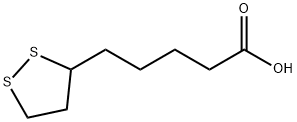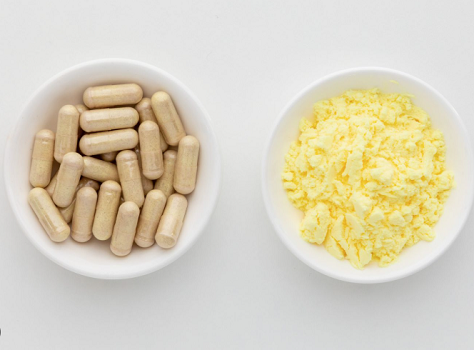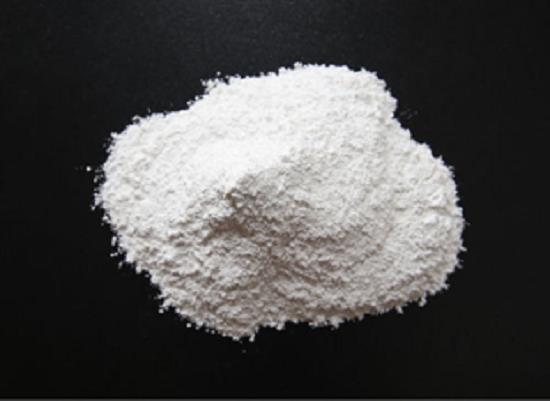α-Lipoic acid: pharmacokinetics and activities
General Description
α-Lipoic acid is a natural compound that plays a vital role in cellular energy production. α-Lipoic acid exhibits rapid absorption when taken orally, with maximum plasma concentrations reached within 0.5 to 1 hour. α-Lipoic acid acts as an antioxidant by chelating metals, scavenging free radicals, regenerating antioxidants, and repairing oxidative damage. It also shows potential in antidiabetic activity by enhancing glucose uptake. Moreover, α-lipoic acid exhibits anticancer effects by inhibiting cell proliferation, inducing apoptosis, and suppressing tumor growth through various mechanisms.

Figure 1. Capsules of α-lipoic acid
Pharmacokinetics
The pharmacokinetic characteristics of α-lipoic acid involve its absorption and plasma concentrations. When α-lipoic acid is orally ingested, it is rapidly absorbed, with the maximum plasma concentrations reached within 0.5 to 1 hour. Studies have shown that the R enantiomer of lipoic acid (RLA) is more quickly absorbed than the S enantiomer. The maximum plasma concentrations of RLA have been found to be 40 to 50 percent higher than that of SLA. Additionally, when RLA is administered in an inclusion complex with γ-cyclodextrins, there is increased plasma exposure compared to non-included RLA. The area under the plasma concentration-time curve (AUC) for the included RLA is significantly higher than the non-included RLA. In terms of bioavailability, studies have observed that plasma RLA concentrations are higher than SLA concentrations at similar doses in humans. This difference in absorption and plasma levels suggests different pharmacokinetic profiles between the two enantiomers. It is worth noting that the time the stomach is emptied does not appear to affect the rate of α-lipoic acid uptake. 1
Activities
Antioxidant activity
α-Lipoic acid has antioxidant effects due to their ability to chelate metals, scavenge free radicals, regenerate other antioxidants, and repair oxidative damage. α-Lipoic acid can increase glutathione levels, which helps eliminate toxins, particularly toxic metals. Studies have shown that α-lipoic acid administration reduces iron ions in cells and improves resistance to oxidative stress. As a water- and fat-soluble antioxidant, α-lipoic acid can neutralize reactive oxygen species throughout the body, making it known as the universal antioxidant. 2
Antidiabetic activity
In the context of metabolic disorders, diabetes mellitus (DM) is a significant global health issue, impacting around 422 million individuals worldwide. DM is characterized by disruptions in the metabolism of carbohydrates, lipids, and proteins. It is also recognized as a key risk factor for various diseases such as atherosclerosis, hypertension, heart failure, myocardial infarction, neuropathic pain, and stroke. Recent evidence suggests that DM is associated with excessive generation of reactive oxygen species and impaired antioxidant defenses. α-Lipoic acid has shown potential for the treatment of diabetes due to its ability to enhance glucose uptake in both insulin-sensitive and insulin-resistant muscle tissues. It achieves this by promoting the translocation of glucose transporters to the plasma membrane and facilitating tyrosine phosphorylation of insulin receptor substrate-1. 3
Anticancer activity
A growing body of literature highlights the potential application of α-lipoic acid in cancer therapy. Cancer cells exhibit a metabolic phenomenon known as the Warburg effect or aerobic glycolysis, where glucose is preferentially converted to lactate for ATP generation. Inhibiting this metabolic process may contribute to anticancer effects. Studies have shown that α-lipoic acid can inhibit cell proliferation, reduce lactate production, and induce apoptosis in various cancer cell lines, including neuroblastoma, breast cancer, thyroid cancer, lung cancer, and colon cancer. Additionally, α-lipoic acid has been found to activate AMPK and down-regulate the mTOR-S6 signaling pathway, leading to suppressed tumor growth in both cell culture models and mouse xenograft models of thyroid cancer. Furthermore, α-lipoic acid has demonstrated the ability to generate reactive oxygen species (ROS), promoting apoptosis through the mitochondrial pathway in lung cancer, breast cancer, and colon cancer cells. It has also been shown to inhibit the migration and invasion of metastatic breast cancer cells through modulation of ERK1/2 and AKT signaling. Collectively, these findings suggest that α-lipoic acid holds promise for cancer management and prevention. 4
Reference
1. Hermann R, Niebch G, Borbe HO,
Fieger-Büschges H, Ruus P, Nowak H, Riethmüller-Winzen H, Peukert M,
Blume H. Enantioselective pharmacokinetics and bioavailability of
different racemic α-lipoic acid formulations in healthy volunteers. Eur J
Pharmacol Sci, 1996, 4, 167–174.
2. Goralska M, Dackor R, Holley B, McGahan MC. Alpha lipoic acid changes iron uptake and storage in lens epithelial cells. Exp Eye Res, 2003, 76, 241–248.
3. Konrad D, Somwar R, Sweeney G, et al. The antihyperglycemic drug alpha-lipoic acid stimulates glucose uptake via both GLUT4 translocation and GLUT4 activation: potential role of p38 mitogen-activated protein kinase in GLUT4 activation. Diabetes, 2001, 50(6):1464-1471.
4. Salehi B, Berkay Y?lmaz Y, Antika G, et al. Insights on the Use of α-Lipoic Acid for Therapeutic Purposes. Biomolecules, 2019, 9(8):356.
Related articles And Qustion
Lastest Price from α-Lipoic Acid manufacturers

US $1.00-100.00/KG2025-09-04
- CAS:
- 1077-28-7
- Min. Order:
- 1KG
- Purity:
- 95%
- Supply Ability:
- 300KG

US $0.00-0.00/kg2025-08-19
- CAS:
- 1077-28-7
- Min. Order:
- 1kg
- Purity:
- 99%-101%; USP
- Supply Ability:
- 1000T





